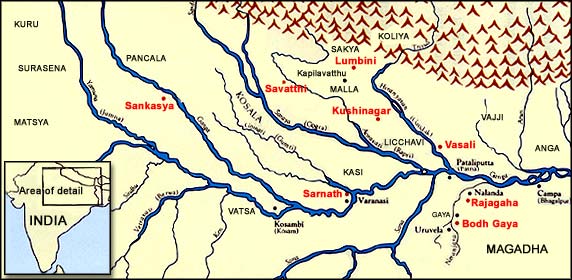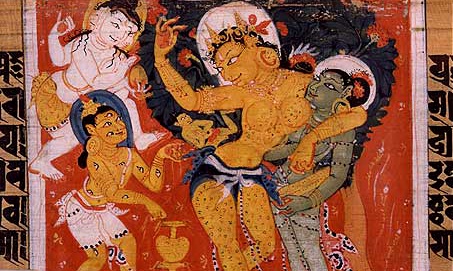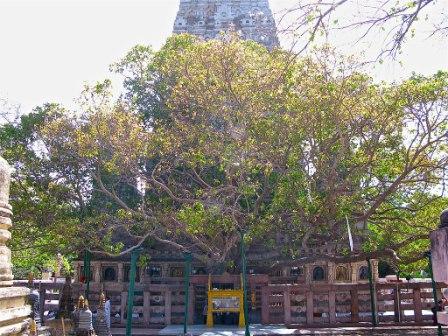Siddhārtha Gautama
Siddhārtha Gautama was the founder of Buddhism. He became known as the Buddha (meaning the "Awakened One") after attaining enlightenment. Many historic facts about Buddha is uncertain, including his birth and death. Most of what we know about him is based on early Buddhist texts, such as the nikayas.
It is believed that he was born in Lumbini, a town in modern-day Nepal, approximately 550 BCE. He lived most of his live in the upper Ganges Valley. Below is a map showing major sites of the upper Ganges Valley at the time of Buddha (Lumbini is located at the top part of the map below the mountains):

Siddhartha's father was a ruler in Kapilavastu (also spell as Kapilavatthu; located in the above map below Lumbini, in black) and mother a princess from a nearby country. Legend had it that, on the night Siddhartha was conceived, his mother dreamt that a white elephant with six white tusks entered her right side. Before Siddhartha was born, as with tradition at that time, her mother left Kapilavastu for her father's country. However, he was born in Lumbini before her mother can reach the destination.
Below is a painting of the miraculous birth of Buddha, out of the side of his mother, painting found in Nalanda, Bihar, India:

Siddhartha spent his childhood years and got married in Kapilavastu. Soon after his own son was born, he left his palace against the will of his father and lived as a wandering ascetic. After several years of learning from other teachers and experimenting with ascetic living, he attained enlightenment under a Bodhi tree at Bodh Gaya (near the lower right corner of the map), and became known as the Buddha. Thereafter he wandered throughout the Ganges plain teaching and building a monastic order. At about 80 years old he passed away in Jushinagar attaining paranirvana (i.e., released from the rebirth cycle).
Below is a picture of the Bodi tree in the Sri Mahabodi Temple in Bodh Gaya.

If you are interested in reading more about Buddha, you can read Buddha: His Life, His Teachings, His Order. The author, Manmatha Nath Shastri (1855-1912), was a Bengali writer, scholar of Sanskrit and Pali. He served as rector in Keshab Academy and Serampore College, and was described as India's most prolific translator of Hindu epics and scriptures.
